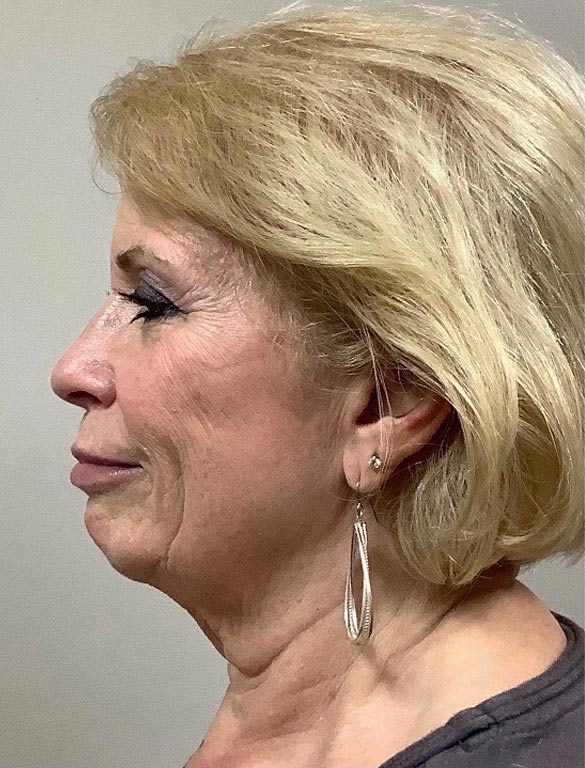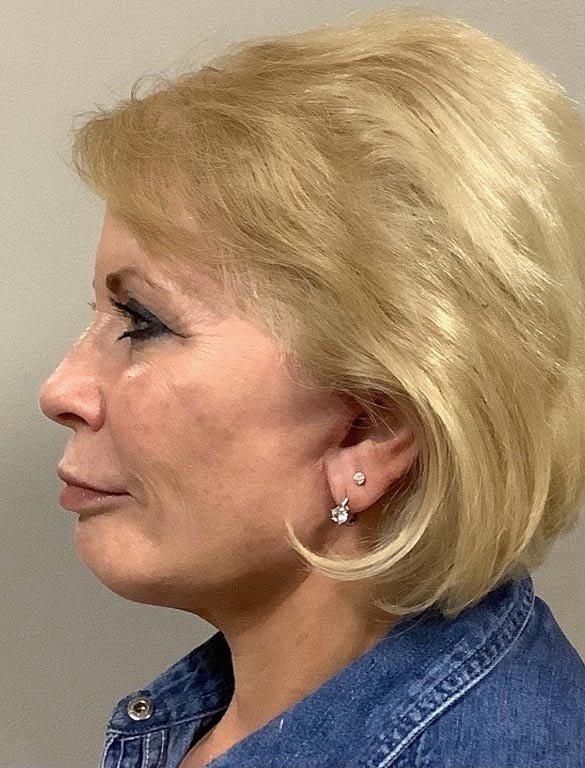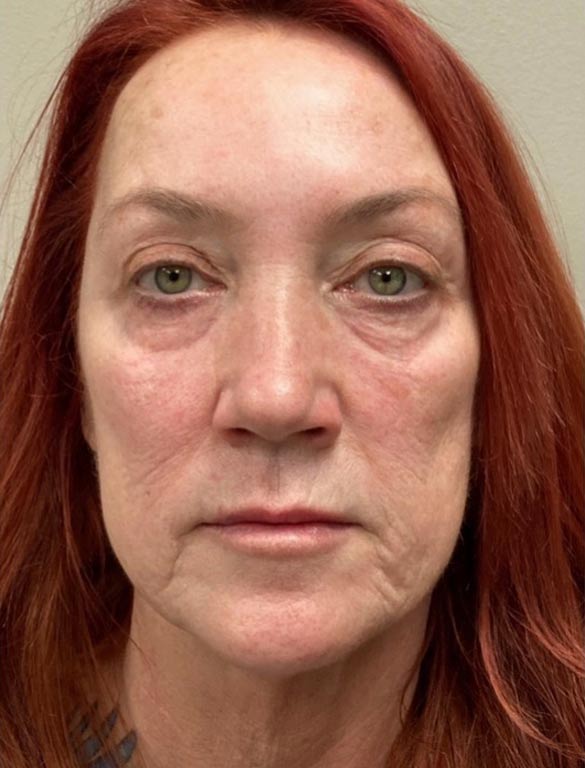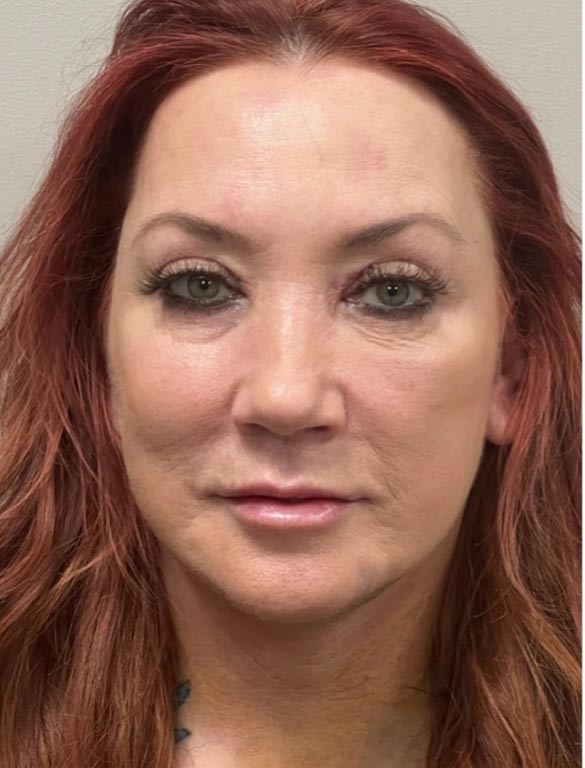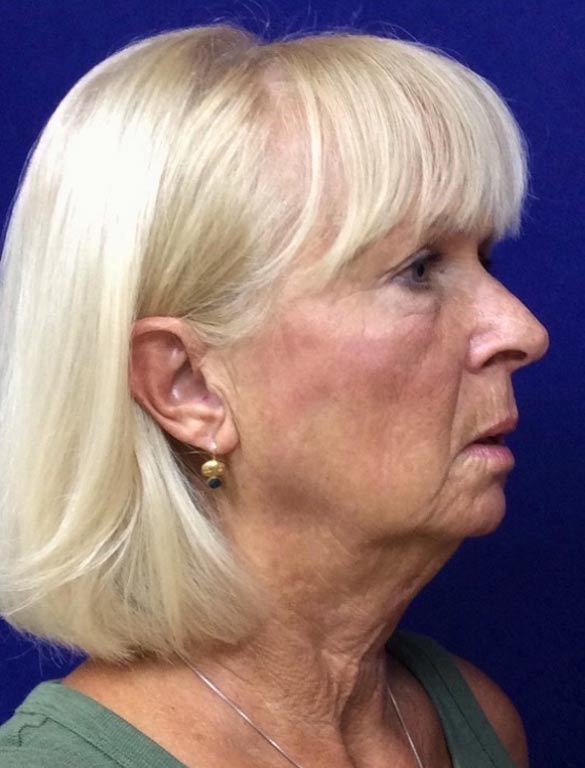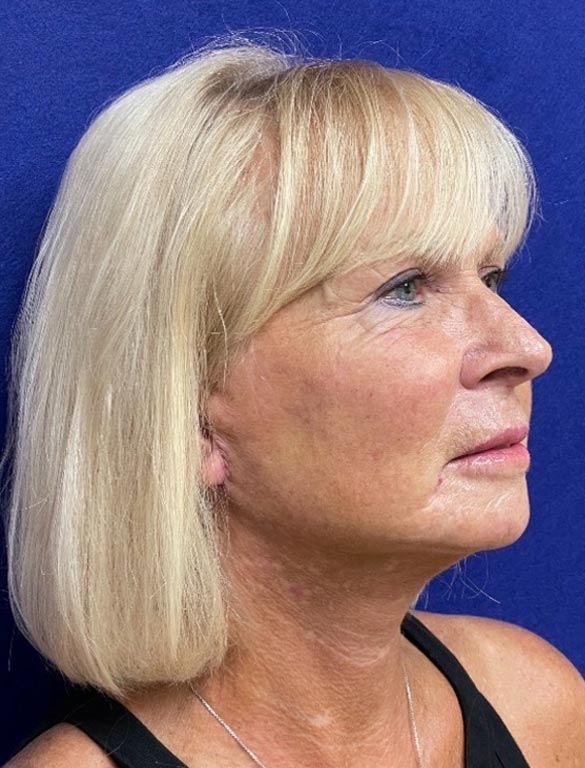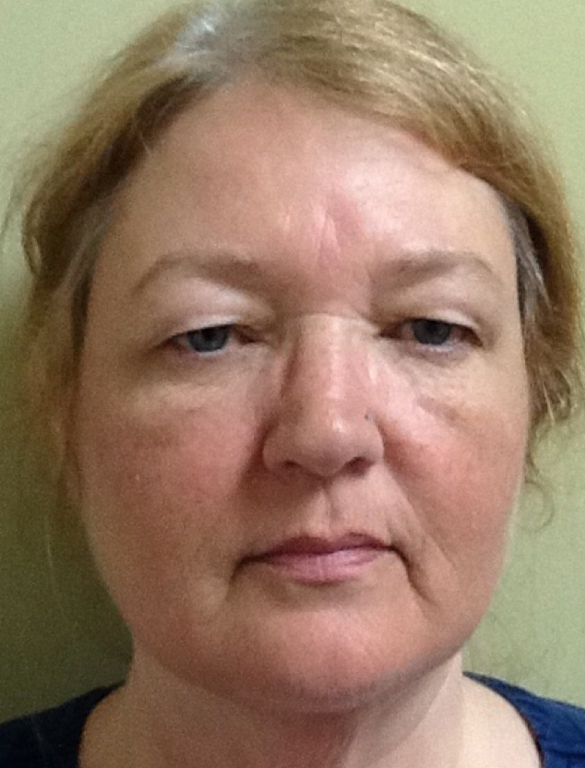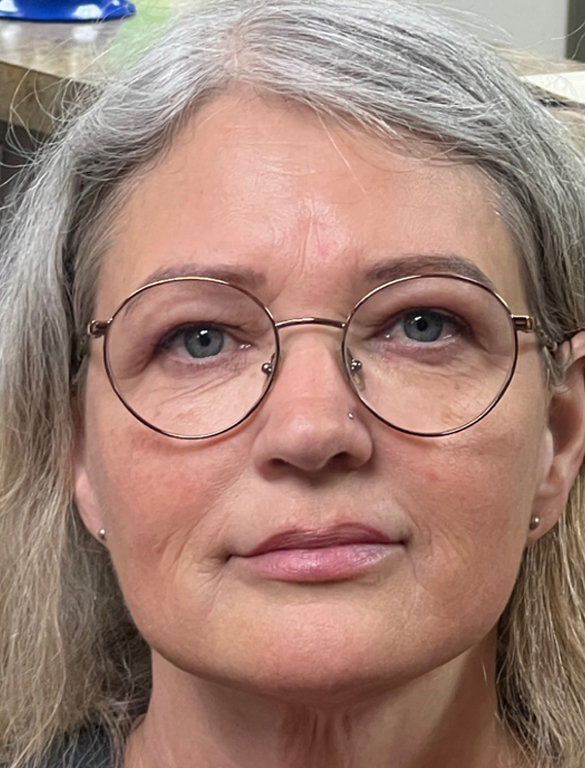Varicose Vein Treatment
Conveniently located to serve the areas of Fenton, Sterling, Livonia, MI and San Diego, CA
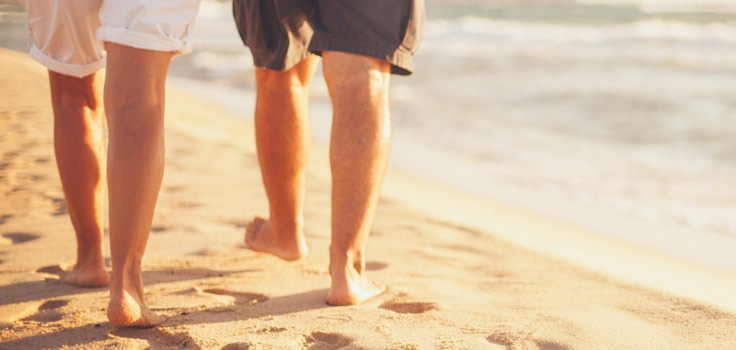
The development of varicose veins can be a major obstacle for men and women alike when it comes to maintaining smooth, healthy, and youthful-looking skin. Beyond the aesthetic frustrations that come with the appearance of varicose veins, they often present with a list of symptoms that can range from uncomfortable to painful. While many of these symptoms can be problematic in carrying out daily tasks due to general discomfort, they may also be linked to more serious underlying health issues that need to be addressed by a professional vascular surgeon. For all of these reasons, noticing side effects of varicose vein issues is imperative and a first step in putting a plan into place to maintain overall vein health in the long-term.
Varicose veins are the result of blood flow problems in which the valves aren’t functioning properly, blood may be flowing the wrong direction and the veins struggle to return blood from the legs back to the heart. As these veins struggle, they begin to bulge, turn purple or blue and cause discomfort and self-consciousness. Varicose veins are most common among women, especially as they age, and though the exact reason for the development of these damaged veins can be hard to pinpoint on an individual basis, the many factors that contribute to varicose veins include a struggle with obesity, pregnancy, changes in hormones, a sedentary lifestyle and heredity. If a woman’s mother or grandmother developed varicose veins, there’s a much higher chance that they themselves will acquire some of their own.
Although the disorder is very common, most don’t even know what causes varicose veins, let alone how to prevent them. Varicose veins can be fairly dangerous if untreated – yet most won’t know what to do if it turns out they have them. As a result, this oftentimes painful disease goes untreated all over the world, even though treatment does exist. Sadly, varicose vein symptoms that go untreated may develop into blood clots. Some of these blood clots may begin to form within a vein that is situated deep inside of the body which if ruptured can cause problems within the lungs or lead to a stroke or a heart attack. Uncomfortable skin ulcers and sores that won’t heal also may result from untreated varicose veins. Because of this, it is very important that you recognize the symptoms of varicose veins and get them treated as soon as possible.
Contents
- 1 Problem Veins
- 2 About Varicose Veins
- 3 Symptoms
- 4 Varicose Veins During Pregnancy
- 5 Treatments
- 6 Natural Treatments
- 7 Other Vein Solutions
- 8 Risks
- 9 Contact
- 10 FAQ
- 10.1 What is varicose vein treatment?
- 10.2 Who is a good candidate for varicose vein treatment?
- 10.3 What is the varicose vein treatment procedure?
- 10.4 What kind of anesthesia is used during varicose vein treatment?
- 10.5 How can I prepare for varicose vein treatment?
- 10.6 What can I expect during varicose vein treatment?
- 10.7 What can I expect post-procedure?
- 10.8 What is the recovery time for varicose vein treatment?
- 10.9 What are the risks associated with varicose vein treatments?
- 10.10 What is the cost for varicose vein treatment?
Problem Veins
Varicose veins are caused when veins do not properly return blood from the lower legs to the heart due to malfunctioning valves. When the valves malfunction, blood flows in the wrong direction, pooling in the leg veins and causing bulging leg veins. In addition to being unattractive, they can also be a source of pain, and cramping, and cause a feeling of heaviness in the legs. Severe cases of varicose veins can lead to blood clots and other serious conditions.
There are two types of problem veins — varicose vein and spider. While more common in women, men are prone to this condition as well. These types of veins develop due to many factors including:
- Heredity
- Pregnancy
- Obesity
- Hormonal Changes
- Sedentary Lifestyle
About Varicose Veins
The human body’s circulatory system is a complex network of veins and arteries that are responsible for moving blood seamlessly between the heart, limbs, and the rest of the body. While arteries carry oxygen-rich blood away from the heart, veins are tasked with carrying oxygen-depleted blood back up to the heart, against the pull of gravity. To help make this happen, veins are outfitted with a series of valves that ensure blood is flowing correctly. When one or more of these valves happens to malfunction, it doesn’t take much time for blood to flow back down in the opposite direction and begin to pool in the limbs. These malfunctions are referred to as venous insufficiencies and many physicians point to this as an underlying cause for varicose veins. As the blood pools in the limbs, pressure builds on the vein walls, and over time, bulging, discoloration, and twisting can occur. In addition to venous insufficiencies, the development of varicose veins has been linked to genetic dispositions, hormonal fluctuations, the natural aging process as well as lifestyle choices. Those who spend a significant amount of time standing or sitting during the day for work or fly long distances on a regular basis may be more prone to developing varicose veins over time.
Though the early appearance of varicose veins doesn’t pose a huge threat, the discomfort associated with these malfunctioning veins can continue to grow if not treated and more serious ailments such as blood clots may arise. Thankfully there are many options for treating varicose veins available to varicose vein sufferers varying from simple changes such as an increase in exercise or in wearing compression stockings to pursuing more aggressive medical treatments including ambulatory phlebectomy, laser ablations, or ultrasound-guided sclerotherapy. Before seeking any treatment, mild or more aggressive, an examination by an experienced vein specialist is encouraged to determine the best course of action.
Symptoms
The symptoms associated with varicose veins are vast and varied. Some individuals who suffer from this condition will notice twisted or bulging veins just under the surface of the skin that present as discolored ropes of either red, purple, blue, or a combination. Beyond these aesthetic changes, many who suffer from varicose veins also notice significant swelling, aching, and even cramping at the site of the veins. Some of these veins may be warm to the touch and mobility may be impacted by the most severe cases of varicose veins.
To avoid these issues and more, here are just a few of the common symptoms varicose vein sufferers may exhibit:
- Veins that have become especially apparent with either greenish, purple, or blueish tints.
- Veins that have a thick, knotted appearance that bulges beneath the surface of the skin.
- Pain and cramping sensations or a general achiness in the thigh or calf area. An overall heaviness and tiredness in the legs often accompany varicose veins.
- Varicose veins sometimes cause a tingling or burning sensation throughout the legs, sensations which are often mistaken for “Restless Leg Syndrome” instead of a consequence of untreated varicose veins.
- An overall swelling of the legs is generally due to insufficiency with vein function of which varicose veins are frequently the result. Venous insufficiencies are 8 to 10 times more likely to cause swelling in the legs than any other cause.
Addressing varicose veins with one of Michigan’s most experienced vein care specialists is very important as vein symptoms will only become worse if untreated and often varicose vein complications can lead to other more serious ailments if not addressed. Not only will the symptoms of varicose veins add unnecessary pain and discomfort to your life, but they can also make you less likely to want to participate in physical activity while making your job functions more difficult. Varicose vein disease discomfort makes it hard for most patients to really enjoy a good night’s rest due to swelling, tingling, and cramping.
Varicose Veins During Pregnancy
Pregnancy is a time fraught with changes. And though most of these changes are beneficial toward the ultimate goal of a healthy delivery, some side effects along the way can be a nuisance and require medical assistance. Some women will find that they develop varicose veins during pregnancy as well as a considerable amount of varicose veins after pregnancy as weight gain puts more pressure on their legs and veins, and the increase of bodily hormones affects their vein walls.
Enlarged pregnancy veins can not only be unsightly for the patient who bears them but they can also be risky. This is because the body relies on these veins to safely transfer blood to the heart, so it’s important that women seek medical attention for varicose veins arising in pregnancy.
Generally speaking, women are more prone to developing varicose veins than men as it is; however, it is pregnancy that increases many of the factors that influence the development of vein abnormalities. The tendency to develop varicose veins is largely hereditary so women who have a mother or grandmother that suffered from varicose veins will often find that they develop them as well. An increase in estrogen during pregnancy and extra weight makes it harder for veins to pump blood. This pressure can weaken the valves, causing a buildup of blood in the varicose veins after pregnancy.
Treatments
No matter how well-shaped your legs are, just a single varicose vein or unsightly spider vein can ruin the overall look. Fortunately, our Michigan Vein Center offers quality varicose vein treatments. Read on for more information about varicose vein treatment in Michigan. There are several varicose veins treatment options including compression stockings and exercise. We also treat varicose veins with Varithena and VenaSeal. More aggressive varicose vein treatment options include sclerotherapy, laser ablation, and ambulatory phlebectomy.
Ambulatory Phlebectomy is a minimally invasive surgery that is performed with local anesthesia and done through tiny little holes made through the skin toward the affected veins which are then carefully removed. The small punctures leave next to no scarring once they’ve been closed and have time to heal.
The laser ablation technique is also performed under local anesthesia and through a small puncture made near the knee. A very thin catheter is carefully inserted through the hole where a tiny laser is then directed to the affected veins to destroy the vein and cut off blood flow. These veins will then be dissolved into the body naturally.
Varithena
Varithena treatment doesn’t require incisions or stitches; most treatments are completed in less than an hour. This minimally invasive procedure involves injecting a microfoam which causes the unhealthy veins to close.
During the procedure, the injection site is numbed for your comfort. Once numb, the Varithena microfoam is injected and fills the section of the vein, treating the vein wall and then collapsing the unhealthy vein. The collapsed vein allows blood to be redirected to nearby, healthier veins.
VenaSeal
The non-surgical VenaSeal™ treatment is injected into your vein to permanently seal it off. This newly developed procedure achieves this through an endovenous closure and does so without the need for any sedatives. While a small amount of local anesthetic is used on the injection site, patients will not be able to feel the catheter inserted into the vein. The catheter is then inserted at several positions in the vein before our physicians manually close down the impacted vein. Once the affected vein is closed, blood flow will be redistributed to nearby healthy veins.
After Your Treatment
VenaSeal™ can be easily completed in our offices so you do not have to incur additional costs by checking into a hospital. Most patients will only have a small bandage at the site of injection following the procedure and little else, similar to when you have blood drawn. VenaSeal™ causes significantly less pain and bruising compared to other treatment options. Additionally, there is no need for post-procedure support hoses. While some patients may need to rest after the procedure, most can return to their everyday activities right away.
Results of the VenaSeal™ Treatment
Patients of the VenaSeal™ procedure will begin to see the benefits right away following their procedure. Any symptoms and discomfort associated with venous disease and varicose veins will begin to fade, along with bulging veins. Most symptoms can easily be treated with VenaSeal™.
Drawbacks of VenaSeal™
At this time there are no identifiable drawbacks of the VenaSeal™ treatment. Clinical studies have shown a 97% success rate for patients who chose VenaSeal™ to treat their varicose veins and it was determined to be safe and effective. There is no reason to say no to VenaSeal™!
Ultrasound Guided Sclerotherapy
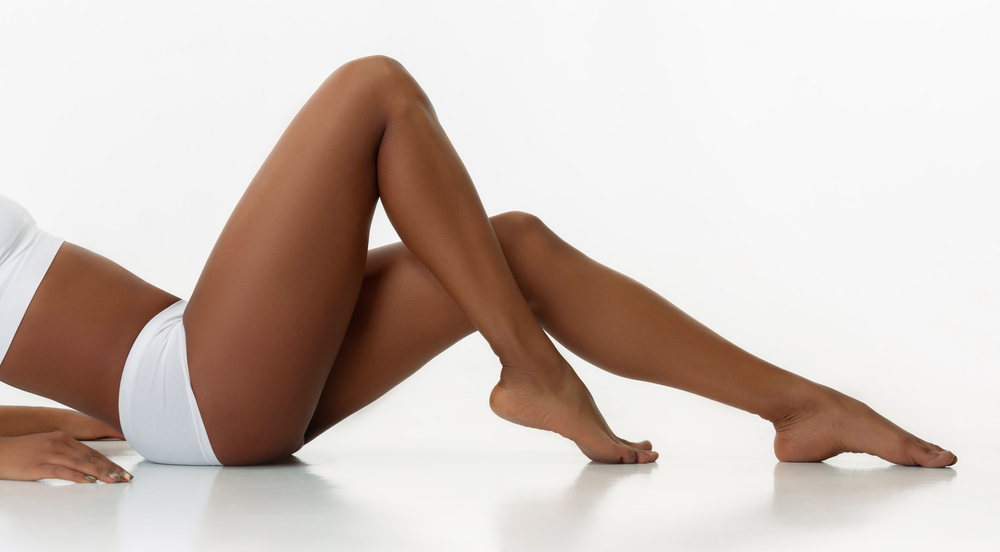
Ultrasound-guided Sclerotherapy is relied on as a follow-up treatment to endovenous laser or ambulatory phlebectomy treatments that were unable to fully target smaller, harder-to-reach varicose veins that may have been left post-treatment. This procedure requires the patient to lie flat on their back while an ultrasound screen helps the physician guide a small needle to the damaged vein and then inject a sclerosing solution into the vein to close it up permanently.
This procedure is used to treat varicose veins that may not respond to traditional sclerotherapy. It is also used to treat small varicosities that may remain after treatment with endovenous laser or ambulatory phlebectomy.
During this procedure, a patient will lie flat while an image is viewed on an ultrasound screen. A tiny needle is then guided into the center of the vein and injecting a sclerosing solution that will seal the vein.
Additionally, varicose veins are a chronic condition and may require ongoing maintenance and treatment. You can discuss any of these procedures and which ones may be right for you during a consultation with the practitioners at our Michigan Vein Center. Call today for more information about varicose vein treatment in our Michigan vein centers and other procedures we offer.
Endovenous Laser Ablation Treatment
This is a minimally invasive procedure performed under local anesthesia. A thin catheter is inserted into the vein via a small puncture near the knee. Laser light is then inserted through the catheter and the laser energy seals the faulty vein to cut off blood flow. The vein will then be dissolved into the body.
Benefits of Endovenous Laser Ablation:
- Minimal Discomfort
- Short Procedure Time
- Minor Bruising, Soreness, Swelling
- High Success Rate
Ambulatory Phlebectomy
Ambulatory Phlebectomy, known as varicose vein microsurgery, is used primarily to treat venous disorders that require the removal or treatment of varicose veins. This procedure is recommended for removing varicose veins that are too large to take out through sclerotherapy, yet are too small for laser treatments.
While the legs are the primary area for Ambulatory Phlebectomy, the procedure can be used for vein biopsy, veins around the eyes, and other vascular disorders that cannot be treated through sclerotherapy. It is also helpful when sclerotherapy proposes the possibility of increased complications.
During an initial consultation, the physician will review your medical history, and conduct an exam to evaluate factors including:
- Whether the varicose veins are truly the problem or if other veins must be treated first?
- Are there deep vein clots?
- Are additional procedures indicated?
Procedure
This procedure is performed under a local anesthetic, as it is a minimally invasive technique. Tiny incisions or punctures, about two to three millimeters in size, are made, with the affected veins being pulled through the incisions using a phlebectomy hook or vein retractor. Small sutures are used to close the incisions with very little chance of scarring.
Ambulatory Phlebectomy is often done in combination with other vein treatments such as endovenous laser ablation to eliminate other vascular disorders that can be better treated with these procedures.
Recovery
Patients can usually return to their normal routines within 24 hours. Compression garments or bandages will be worn for about two weeks. Walking is strongly encouraged; however, strenuous activities and exercise should be avoided for seven to 10 days for successful Phlebectomy recovery.
Side Effects
Phlebectomy recovery is not recommended for those people who cannot walk or who cannot wear compression garments, as both of these are required for successful treatment.
Other possible side effects of the procedure include bruising, superficial clot formation, minor infection, transient hyperpigmentation and allergic reaction. These complications are generally uncommon, and your doctor will discuss any potential risks before your procedure.
Because venous disorders are usually considered a medical condition, treatment is often covered by insurance.
Natural Treatments
Countless people will find themselves struggling with some form of venous disease or insufficiency at some point in their lives, whether these vein conditions are spider veins, venous ulcers, superficial phlebitis, or swelling of the legs due to vein problems or varicose veins. Though many of these conditions are without serious symptoms, others struggle with swelling, itching, fatigue of the legs, cramping, tingling, and leg heaviness due to veins that are not performing well. There are also a variety of myths surrounding vein disease. If you’re considering trying out natural varicose vein solutions, keep reading to learn how to get rid of varicose veins naturally!
For some people, natural remedies such as some simple changes in lifestyle and alterations in their diet and activity with the addition of certain natural supplements might help to alleviate some of the side effects associated with varicose veins.
Some simple changes in lifestyle can help treat varicose veins that are causing discomfort and embarrassment. A loss in weight can do a lot to relieve pressure on the legs and veins as they try to pump blood to the heart without pooling. Those who live an especially sedentary lifestyle spending lots of time sitting at an office desk or at home should make an effort to take daily walks or runs or simply make sure to take more breaks during the day in which they can stretch their legs and help encourage blood flow.
Medical grade compression stockings can be worn to help encourage blood flow as well as to assist with the tingling and restlessness often felt in the legs of those who are suffering from a spider or varicose vein.
Many people would rather try natural vein solutions before they turn to surgical treatments for vein problems. There are several over-the-counter and prescription dietary supplements that are available for those who are looking to relieve the symptoms associated with varicose veins. Supplements such as “Diosmin” and “RELIEF” (Reflux Assessment and Quality of Life Improvement with Micronized Flavonoids) are two such supplements that may significantly improve cramps, leg heaviness, and general pain associated with vein insufficiencies.
Treatment for Pregnancy Veins
Those who get varicose veins in pregnancy should not expect these veins to simply go away on their own. For the most part, pregnancy veins become worse and grow in size and severity if left untreated. Women who continue to have multiple pregnancies without treating their varicose veins after pregnancy may find that they’re at a much greater risk for developing more serious conditions, such as blood clots within the body that can lead to heart problems.
Though most women who develop varicose veins during pregnancy will find them developing on their legs, other women may notice pregnancy veins developing on their vagina or vulva as the baby puts pressure on the veins within the pelvis and lower abdomen. In either case, it’s important to see a vein specialist to have your varicose veins treated, particularly during pregnancy when the patient’s overall health is so directly related to that of the baby.
Other Vein Solutions
In taking supplements as the main method for treating varicose veins or other vascular diseases, it’s important to recognize that the results and effectiveness on a patient-by-patient basis are hard to determine and while some patients may see a significant improvement in symptoms, others may not. It’s always a good idea to schedule a consultation with a vein specialist and the Skin and Vein Center to have your individual vein circumstances assessed and expert advice given for the best treatment and hope of healing. There are a few treatments available for varicose veins, including ultrasound-guided sclerotherapy and EVLT.
Risks

While the variety of uncomfortable symptoms is often enough to have those suffering from varicose veins looking for treatment options, there are other more serious factors to consider when dealing with the side effects of varicose vein issues. Varicose veins are an indicator that blood is not easily able to move well through the veins and as a result, those suffering from the condition may be more susceptible to the development of blood clots. The risk with blood clots always lies with the potential for a clot breaking free and traveling to the lungs, which can potentially prove fatal. To avoid this scenario, it’s important for patients with varicose veins to be regularly monitored for changes.
Fortunately, for patients today suffering from varicose veins, there are a number of options when it comes to reducing these problematic veins or eliminating them altogether while trying to avoid vascular surgery. Many times, physicians will recommend that compression garments be worn on a regular basis in order to promote healthy blood flow through the limbs and reduce swelling and painful symptoms. A consistent diet and regular exercise will also likely be recommended.
Beyond these garments and guidelines, it’s likely that patients with varicose veins will undergo an initial ultrasound. This allows the vascular surgeon to clearly map out the problematic veins and be able to identify areas of concern both in the present and those that might become problematic in the future. From here, a customized treatment plan can be put into place. Options include everything from vein stripping where varicose veins are surgically removed to less invasive options such as sclerotherapy where veins are injected to promote closure and collapse, allowing blood to flow well once again through other veins. Laser treatment is also an option for patients who desire a less invasive approach to varicose vein removal unless it is more problematic, then vascular surgery might be required. Precision laser heat is applied to the vein to close it and allow the body to naturally reabsorb the problematic vein.
Contact
Whether you have concerns regarding varicose veins or are looking to establish care for overall vein health, the team at the Skin & Vein Center is here to help! Contact us today to learn more about our many treatments and services and the varicose vein treatment side effects, so that you have all the information in your hands.
FAQ
What is varicose vein treatment?
There are several different treatment options for varicose veins. Compression stockings and exercise are often implemented. Therapies that are more aggressive include Varithena, VenaSeal, ultrasound-guided sclerotherapy, laser ablation, and ambulatory phlebectomy.
Who is a good candidate for varicose vein treatment?
Patients who are suffering from varicose veins are good candidates for varicose vein treatments.
What is the varicose vein treatment procedure?
Endovenous laser ablation entails having a thin catheter inserted into the vein. A laser fiber is then inserted and energy is applied that will seal the faulty vein. The sealed vein will then be absorbed by the body. Ambulatory phlebectomy removes the larger surfaces of the varicose veins. Tiny punctures are made through which the veins are removed. During ultrasound-guided sclerotherapy, a tiny needle is inserted into the vein and injected with a sclerosing solution that will seal the vein.
What kind of anesthesia is used during varicose vein treatment?
This will depend upon the type of treatment being implemented.
How can I prepare for varicose vein treatment?
Your doctor will give you specific instructions for the type of vein treatment you will undergo.
What can I expect during varicose vein treatment?
This will depend on the procedure; however, most procedures are relatively pain-free.
What can I expect post-procedure?
You may have some bruising but the bruises should go away in about two weeks. You will be sent home with a post-procedure treatment plan which could include the use of compression stockings.
What is the recovery time for varicose vein treatment?
This will depend on the treatment option.
What are the risks associated with varicose vein treatments?
Depending on the treatment, risks can include bruising, bleeding, infection, and changes in skin color around the treatment site.
What is the cost for varicose vein treatment?
The cost of varicose vein treatment will be discussed at the time of the pre-operative visit.

